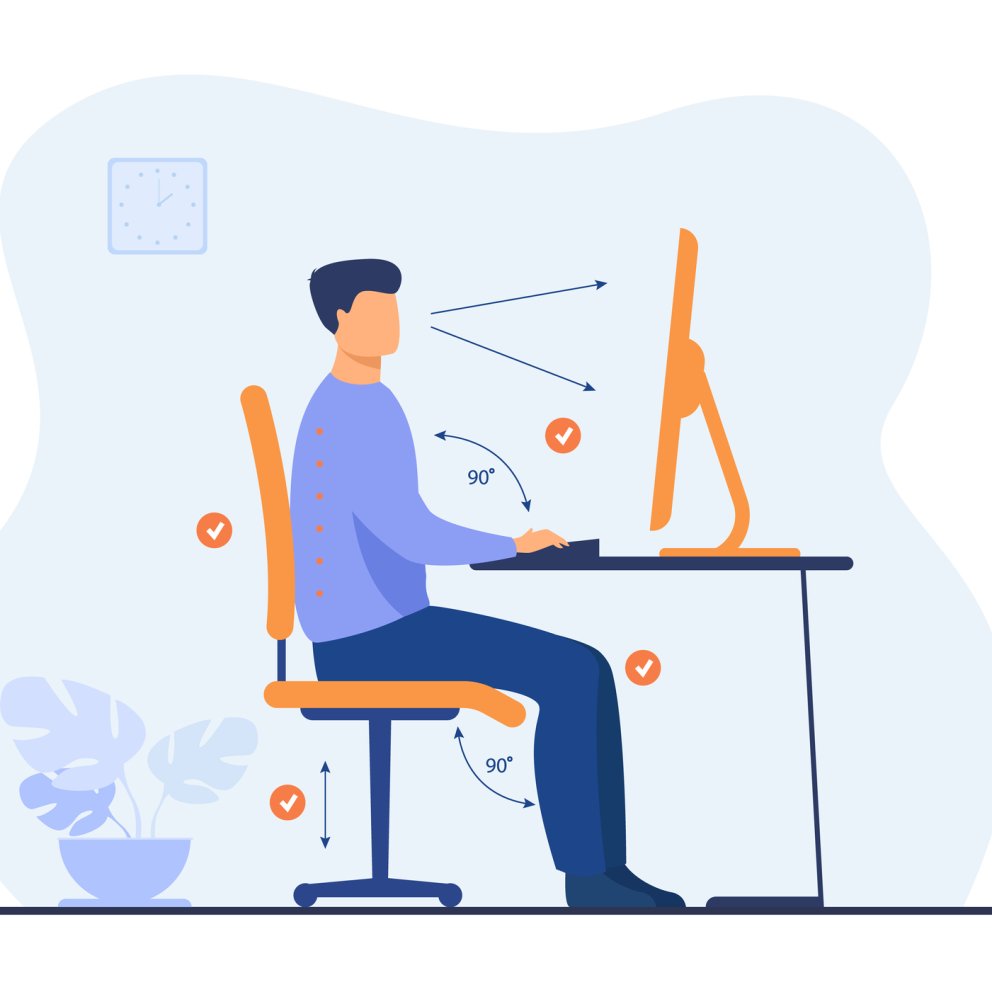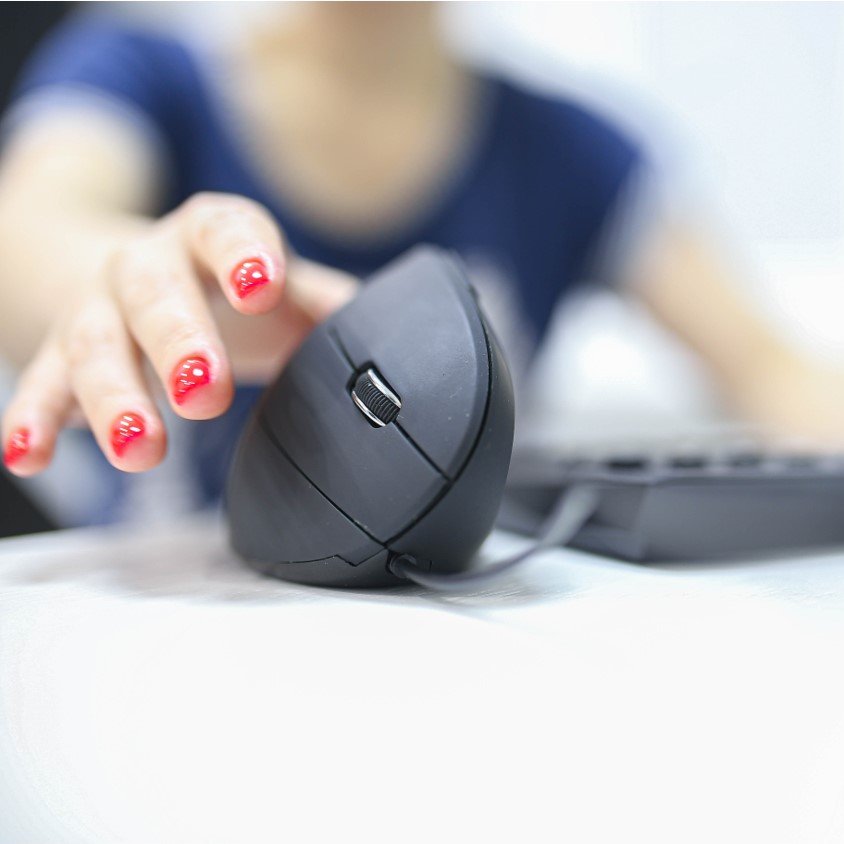
Ergonomics and healthy wrists
Statistics show up to six people each day leaving their jobs for medical reasons, because they are suffering from repetitive strain. A repetitive strain injury (RSI) can be caused by upper limb disorders that most commonly affect the neck and shoulders, elbows and forearms, hands and wrists.
Pain, cramps, weakness or stiffness in the muscles, nerves or tendons from repeated movements and excessive use can be avoided with the right ergonomic accessories.
The objective of ergonomic solutions is to create the most comfortable possible workspaces, equipment and furniture, thus protecting the physical health of your staff. The most appropriate way to align the human body to the natural curves of the spine is the so-called neutral position.

Healthy positioning of your arms while sitting
- Your shoulders, arms, wrists and fingers should be in a neutral and relaxed position.
- When you write, your wrists should not be resting on the desk, but rather aligned to your back. This keeps you from holding your hands at an unnatural angle and lets you move them to reach for the keyboard instead of stretching your fingers to get to the keys.
- Put a foam pad or towel in front of the keyboard to support your wrists and forearms. Your elbows should not be touching the back of the chair while you write.
- The fingers should be in line with the forearm. Keep your elbows bent at least 90°. Pain and tension from typing on a keyboard can be reduced just by not banging on the keys.
- Place the mouse close to the keyboard so you never have to reach for it. Hold and press the mouse lightly.
TIP: If you feel pain in your wrist or forearm, use an ergonomic mouse or keyboard. An ergonomic mouse lets you move just your fingers, not the whole wrist.
Ergonomic mice
The mouse is the accessory used the most when working on a computer. When you’re choosing a mouse, think not only about the design, but also how you will be using it and for how long. Graphic designers opt for a more “fine-tuned” precision mouse while an ergonomic mouse is more useful for accountants filling out Excel spreadsheets.
Computer mice can be classified as follows:
- Ergonomic mice get more comfortable when you adjust the posture of your hands, wrist and forearm.
- Vertical mice are held as if you are shaking somebody’s hand. Here, the wrist bends less to the sides and the forearm rotates less inwards.
- Centrally positioned mice are located directly in front, between you and the keyboard. This minimizes tension in your arm compared to a standard mouse located next to the keyboard.
- “Precision” mice are held by your fingertips, so your fingers bend more and your wrist stays in a relaxed position. Using a “precision” mouse also prevents muscle tension in the forearms.

Did you know that
every fourth mouse customers bought from us in 2021, on average, was ergonomic?
Keep your health in mind when you’re selecting the right computer mouse for yourself. Do you get lost in the huge numbers, types and sizes of mice available? Our specialists can advise you. Contact us!
How to relieve pressure on your wrists?
Mouse and keyboard pads with wrist rests should be a must-have accessory for any ergonomic workplace. They relieve pressure on the median nerve, helping to prevent conditions such as carpal tunnel syndrome. At the same time, they provide comfort and support for your wrists.
You can select from foam or gel pads from among our line. Foam pads are more comfortable and the material is soft and breathable, yet at the same time they are resistant to wear. Gel pads provide firmer support and are easier to clean.
Continue reading

Ergonomics and workplace health

Wellbeing at home office starts with a proper work-life balance

